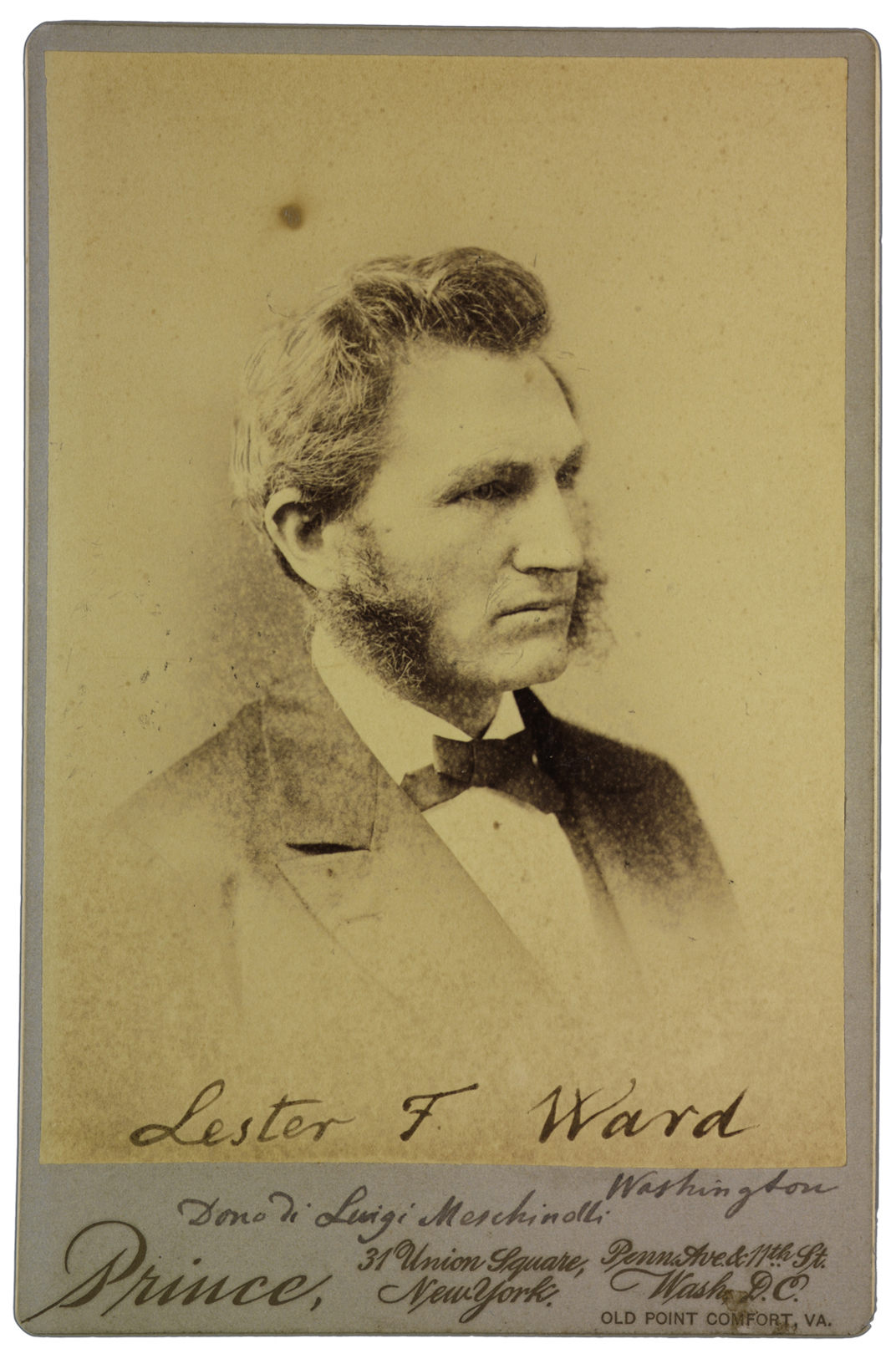The following overview of Lester Ward’s concept of gynæcocentric theory (1888, 1903) is from the book The Making of the Human Sciences in China, by Micah Muscolino (2019). It provides a more succinct statement of Ward’s ideology than is found in the originating chapter on the subject.
* * *
Where Ward’s chapter becomes remarkable is his claim that evidence supports a theory that human species began as female. Claiming support for this scientific fact Ward drew on Darwin, geologist Sir Charles Lyell (whose work influenced Darwin), American zoologist John A. Ryder, paleontologist Pierre-Joseph van Beneden, and other zoologists for support.
Thus, in Ward’s theory, the Arachnida or spider family is not a perversion, but an ancient form of reproductive exchange in which the female extracts sperm and consumes the sperm donor. A then popular view was that the male human, male mammals generally, and male birds in particular, are superior to the female and that the female is a form of “arrested development” in the human species where males have evolved more quickly than females. Ward’s repudiation here is ingenious. The female, he argues, “simply represents the normal condition, while the condition of the male is abnormal due to his great powers of variability.” He argues that “females cannot … vary [because] they represent the center of gravity of the biological system.”
Ward made sexual selection the more complex process. It was, he argued, nature’s mechanism to maintain female centeredness in reproduction and preserve the female as the “hereditary trunk” of what we would call DNA. While the female is the ancestral trunk, in humans, unlike other mammals, the sexes choose each other on the basis of different, functional, evolutionary mandates. The female chooses males on the basis of their superiority within the species. The males oblige females, on the basis of the mandate, to naturally select partners who show the capacity to adapt. Instinct gives the female the ability to discriminate among individuals in a species. The human male evolved from the indiscriminate release of sperm to the faculty of taste.
In other words, men have evolved to discriminate among women on the basis of innate aesthetic appeal. We can see this in lower level organisms where evolution, say of spiders, is changing the relative size of males because female spiders are consistently choosing larger sperm donors. When sexual attraction appears in species—most do not have the capacity for libido (a subjective desire for a specific mate)—the aesthetic capacity of individual males plays a functional role in natural and even perhaps in social evolution.
Females are the original humans. Males are an effusion or an extrusion that makes human evolution what it is. The female has an aesthetic that helps her to decide her sexual partner’s relative worth, and where she remains superior in human evolution is in her capacity to discriminate. In Ward’s imagination the evidence presents a situation where female humans have sex-selected for rationality in men rather than for strength or good looks. Because the criteria include rationality, women bred men who were more rational, and a gender power imbalance was the result. Ward is careful to say that both sexes in humans have rationality. But he is more interested in how evolutionary rationality in men enabled men to seize control of the children. This led to the overthrow of the mother right and the establishment of patriarchy. The evolutionary redress to this injustice is already in process. Men abuse women not because they are hateful or strong or stupid. They have simply not yet evolved the capacity that all women have, of empathy. As women begin to socially select for this quality, the obvious abuses of the patriarchal present should resolve.
SOURCE: The Making of the Human Sciences in China, by Micah Muscolino – Brill, (2019)
